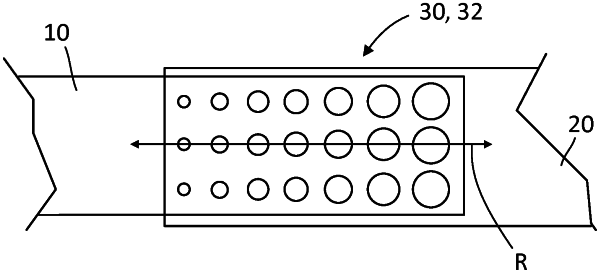| CPC B62D 27/02 (2013.01) [B29C 45/0055 (2013.01); B29C 45/14819 (2013.01); B62D 29/004 (2013.01); B29C 2045/0058 (2013.01); B29K 2705/02 (2013.01); B29K 2705/12 (2013.01); B29L 2031/30 (2013.01)] | 16 Claims |

|
1. A hybrid component, comprising:
at least first and second component portions, the first component portion being formed from a first material which has a first modulus of elasticity, and the second component portion being formed from a second material which has a second modulus of elasticity different than the first modulus of elasticity;
at least one connecting portion by which the first and second portions are connected, the at least one connecting portion extending in a joining direction, wherein the at least one connecting portion is formed either as an insert element, or from one of the first and second component portions;
wherein the at least one connecting portion is configured to compensate for a jump in stiffness between the first and second component portions, the at least one connecting portion having a variable perforation or hole pattern extending in the joining direction to create a stiffness which gradually increases in the joining direction, toward the component portion with the higher modulus of elasticity; and,
wherein a modulus of elasticity in the connecting portion gradually increases in the joining direction, toward the component portion with the higher modulus of elasticity, the increase in the modulus of elasticity, or the slope, being between 0.5 to 1.5.
|